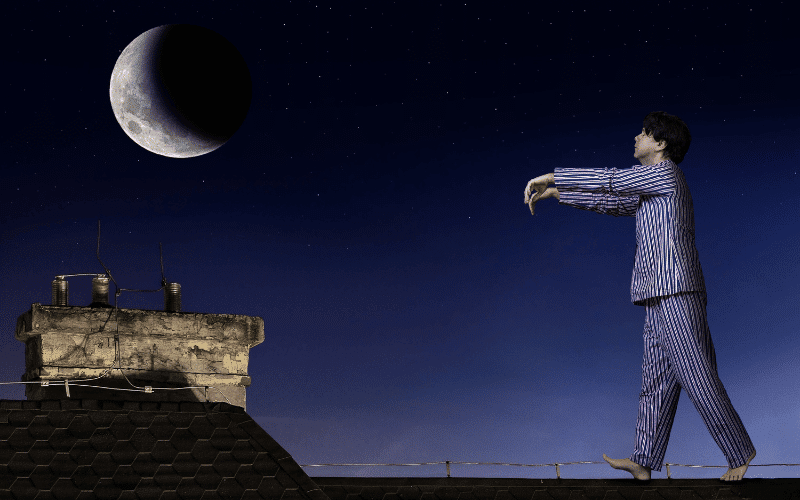Disorder 6: Sleepwalking

Sleepwalking, also known as somnambulism, is a type of parasomnia that involves engaging in complex behaviors, such as walking or performing other activities, while in a state of partial arousal from deep sleep. Sleepwalking episodes can last from a few seconds to several minutes, and the sleepwalker typically has no memory of the event upon awakening.
Although sleepwalking can affect individuals of all ages, it is most common among children, with a prevalence of up to 17% in this age group. The exact cause of sleepwalking is not fully understood, but it is believed to result from a disruption in the normal transition between sleep stages, leading to a state of mixed consciousness. Factors that may contribute to sleepwalking episodes include sleep deprivation, stress, alcohol consumption, certain medications, and a family history of sleepwalking.
Diagnosing sleepwalking usually involves a thorough evaluation of the patient’s medical history, symptoms, and sleep patterns. In some cases, an overnight sleep study (polysomnography) may be conducted to rule out other sleep disorders that could be contributing to the episodes.
While most sleepwalking episodes are harmless and do not require medical intervention, it is important to take steps to ensure the safety of the sleepwalker and others in the household. This may involve removing potential hazards from the sleep environment, securing windows and doors, and using alarms to alert caregivers when a sleepwalking episode occurs.
Treatment for sleepwalking typically focuses on addressing any underlying factors that may be contributing to the episodes, such as improving sleep hygiene, managing stress, and adjusting medications if necessary. In severe cases or when sleepwalking poses a significant safety risk, medications such as benzodiazepines or antidepressants may be prescribed to help reduce the frequency of sleepwalking episodes.
By understanding the nature of sleepwalking and working closely with a healthcare professional, individuals affected by this sleep disorder can take steps to manage their symptoms, improve their sleep quality, and ensure their safety during sleepwalking episodes. (6)